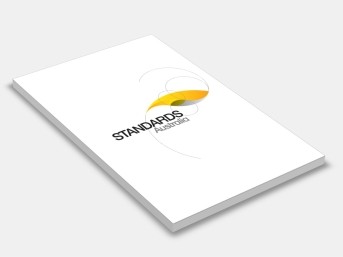AS/NZS 1891.4:2009 Industrial fall-arrest systems and devices, Part 4: Selection, use and maintenance
Standards Australia/Standards New Zealand
Supersedes: AS/NZS 1891.4:2000 Industrial fall-arrest systems and devices, Part 4: Selection, use and maintenance
Draft Designation: DR 08080Amended by: AS/NZS 1891.4:2009 Amd 1:2021 Industrial fall-arrest systems and devices, Part 4: Selection, use and maintenance
This edition has been prepared with the specific intention of aligning it with the recently published edition of AS/NZS 1891.1.
Principal changes from the previous edition are as follows:
(a) Removal of ‘total restraint’ from the scope of the Standard as equipment provided solely for restraint purposes is not dealt with in the AS/NZS 1891 series of Standards. This Standard recognizes only ‘restraint technique’ which allows for the possibility of a fall and requires the use of fall-arrest rated equipment and anchorages. For clarification purposes a description of ‘total restraint’ is given in Appendix F.
(b) Minimum allowable anchorage strength to be 12 kN or 15 kN depending on fall distance.
(c) New terminology for harnesses (full or lower body) and positioning of fall-arrest attachment points.
(d) Inclusion of twin-tail lanyards.
(e) In-service values for the extension of personal energy absorbers in fall situations.
(f) Lower body harness use restricted to limited free fall and restrained fall.
(g) Updated requirements for operator training and assessment.
(h) The term ‘suspension trauma’ has been changed to ‘suspension intolerance (trauma)’.
(i) A belt or waist strap alone in lieu of a harness is no longer permitted for any of the applications in this Standard to protect against a potential fall.
The term ‘informative’ has been used in this Standard to define the application of the appendix to which it applies.
An ‘informative’ appendix is only for information and guidance. Statements expressed in mandatory terms in footnotes to figures are deemed to be requirements of this Standard.
Originated as AS 2626-1983. Previous edition AS/NZS 1891.4:2000. Second edition 2009. Reissued incorporating Amendment No. 1 (June 2021).Contents:
Section 1: Scope And General
Section 2: General Requirements For Selection And Safe Use
Section 3: Anchorages
Section 4: Harnesses Lanyards, Pole Straps And Fittings
Section 5: Fall-Arrest Devices, Selection And Safe Use
Section 6: Horizontal Lifelines And
Section 7: Fall
Section 8: Effect Of Equipment Configuration On Free-Fall Distance
Section 9: Inspection, Maintenance And Storage
Appendix A: Suspension Intolerance (Trauma)
Appendix B: Standards For Components Used In Anchorage Systems
Appendix C: Inspection Of Harnesses, Lanyards And Associated Equipment—Check List
Appendix D: Inspection Of Fall-Arrest Devices—Check List
Appendix E: Guidance For The Provision Of Training And Competency
Appendix F: Total Restraint
Industrial Height Safety Equipment.
SF-015
Australian Chamber of Commerce and Industry; Australian Industry Group; Australian Lightweight Vertical Rescue Instructors; Australian Mobile Telecommunications Association; Business New Zealand; Certification Interests (Australia); Communications, Electrical and Plumbing Union; Electricity Engineers Association (New Zealand); Energy Networks Association; Fall Protection Manufacturers Association; Industrial Rope Access Association of New Zealand; Master Builders Association; Ministry of Economic Development (New Zealand); New Zealand Arboriculture Association; Roads and Traffic Authority of NSW; Safety Institute of Australia; Scaffolding and Rigging Association of New Zealand; WorkCover New South Wales.
